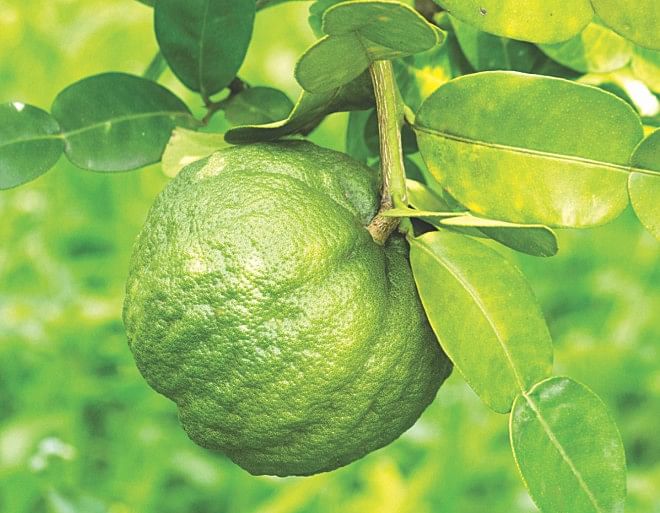Citrus Story
Citrus Story

A shatkora is a citrus fruit growing in the Sylhet region and used in cooking. It imparts a rich distinctive flavour and is particularly suited to meat dishes. It also lends itself well to achar. I wanted to photograph the shatkora growing in a tree.
My search took me to Jaintiapur in northern Sylhet, home of the Citrus Research Station. Part of Bangladesh Agricultural Research Institute, the Station was established in 1961 on 119 acres of hilly land. It is devoted to horticultural research. I met Borhannuddin Bhuyan, Scientific Officer of the Station. Bhuyan and I discussed citrus.
Many types of citrus fruits grow in Sylhet: not just shatkora but oranges, maltas and different types of lemon including adalebu, katalebu, jaralebu, ashkonilebu, shorbotilebu etc. Growing up in Sylhet, I encountered them often and was always curious about their diversity. So I asked Bhuyan about the variety of citrus fruit growing in Sylhet.
“There are seventy-eight species of citrus growing in the Sylhet region,” he said.
I expressed surprise that the number was so high.
“Sylhet has so many citrus varieties because it falls in the centre of origin of citrus fruits,” Bhuyan explained. Citrus fruits originated and grew wild in their natural home before being domesticated and disseminated globally. This home is thought to be in northern India and China and Bhuyan said that includes Sylhet.
He mentioned that the Station had records of interviews with older planters of citrus fruits in the area. Not too long ago, citrus plants grew wild in the jungles here and some planters had started their orchards with plants acquired directly from the jungles. This wild growth can only happen in a fruit's area of origin.
What other activities is the Station engaged in today?
Its researchers collect citrus specimens every year from the field; it currently has thirty-two species of citrus. It also helps propagate citrus throughout Bangladesh.
For example, when local (Sylheti) jaralebu plants were stricken by Canker disease, the European Union refused to import the fruit. However, the Station was able to raise disease-free versions of the plant in Narsingdi and the fruit grown there is exported to Europe today. Due to environmental differences the fruits grown in Narsingdi are subtly different from those grown in Sylhet: they are juicier but less flavourful.
The Station also serves as a nursery, selling seedlings to orchards far and wide. What is the most popular seedling they have? Bhuyan thought a bit and said it was malta, because it is relatively easy to grow and profitable.
I thanked Bhuyan and went for a stroll through the Station's gardens. There were many kinds of citrus trees, including pomelos, various oranges and maltas and of course shatkoras. But that was not all. Other fruit trees abounded, including mangoes, jackfruits, guavas, lychees and lotkons.
Seedling sales start in July. You can buy several types of citrus (including shatkora of course) as well as other plants including thoikor, a startlingly sour fruit popular in Sylhet.
www.facebook.com/tangents.ikabir